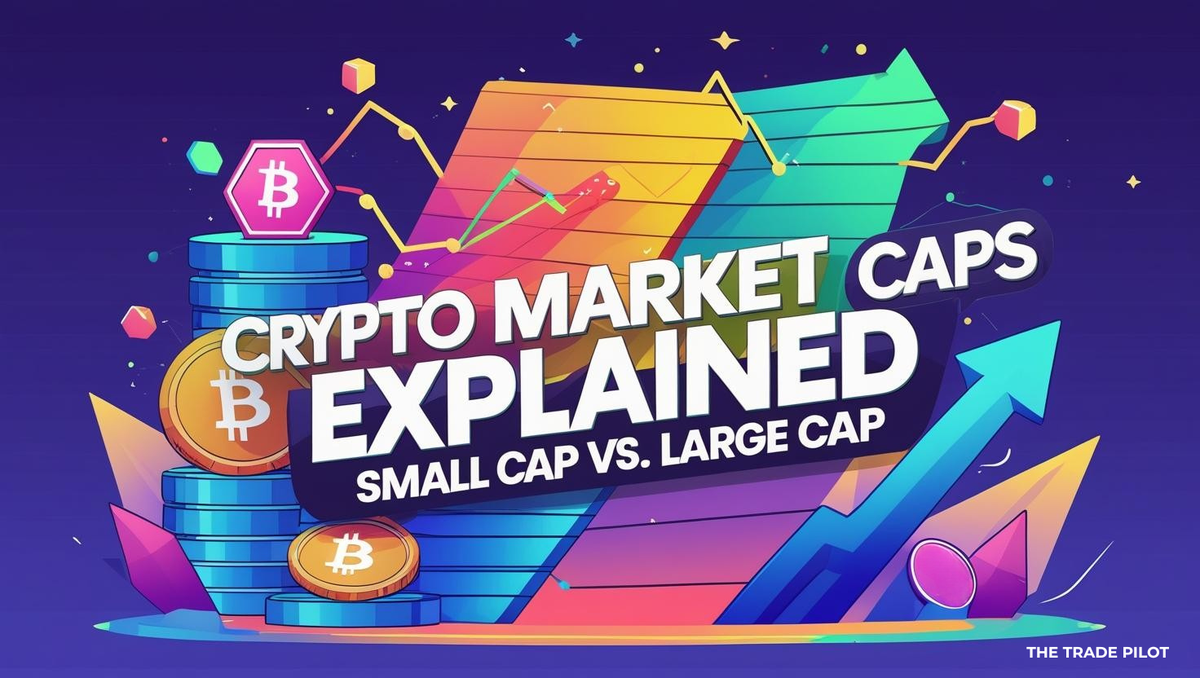Ever wondered what people mean when they say a coin is a “small cap” or a “large cap”? Market capitalization, or market cap, is one of the most important metrics in crypto. It helps traders and investors quickly understand a coin’s size, risk level, and growth potential. In this guide, we’ll break down what market cap means, why it matters, and how to use it when choosing your next crypto investment or trading strategy.
What Is Market Cap in Crypto?
Market cap is a simple calculation:
Market Cap = Current Price × Circulating SupplyThis number shows the total value of all coins currently in circulation. For example, if a coin has 10 million tokens circulating and each is worth $10, the market cap is $100 million.
Market cap helps you quickly compare the size of different cryptocurrencies. A coin with a $200 billion market cap is a major player (like Bitcoin), while a coin with a $50 million market cap is much smaller and riskier.
Types of Crypto Market Caps
While there is no universal standard, cryptocurrencies are generally grouped into three main categories:
Large Cap Coins
Large caps are generally considered the safest investments in crypto. These include Bitcoin, Ethereum, and other well-established coins with market caps above $10 billion. They are less volatile than smaller coins but usually offer slower, steadier growth.
Mid Cap Coins
Mid caps usually have market caps between $1 billion and $10 billion. These projects are often established but still have room to grow. They carry more risk than large caps but can deliver higher returns.
Small Cap Coins
Small caps have market caps below $1 billion and include newer or niche projects. These coins are high-risk, high-reward—they can deliver massive gains in bull markets but also crash quickly during downturns.
Why Market Cap Matters
Market cap is more than just a number—it’s a way to measure how much “money” is in a project. Here’s why it’s important:
- Risk Assessment: Larger market cap coins are usually less risky but offer slower growth. Small caps can grow quickly but are much more volatile.
- Liquidity: Larger market cap coins tend to have higher trading volumes, meaning you can buy and sell them more easily without affecting the price.
- Growth Potential: A coin with a $50 million market cap doubling to $100 million is more realistic than Bitcoin doubling from $2 trillion to $4 trillion—at least in the short term.
Examples of Small Cap vs. Large Cap Coins
Imagine two projects:
- Coin A: Market cap $200 billion — This is a large cap like Bitcoin. It’s considered relatively stable, attracts institutional investors, and moves the entire market when its price changes.
- Coin B: Market cap $50 million — This is a small cap, possibly a new DeFi token or niche blockchain. It could 10x in a bull market—but it could also lose 80% of its value overnight.
How to Use Market Cap in Your Trading Strategy
Market cap is a helpful filter for deciding which coins to trade or invest in:
- If you want stability, focus on large caps.
- If you want potential big gains, allocate a small portion of your portfolio to small caps.
- A balanced portfolio may include a mix of large, mid, and small cap coins.
Bots like The Trade Pilot can help you set rules for which coins to trade based on market cap, allowing you to build a strategy that matches your risk tolerance.
Common Misconceptions About Market Cap
- Price Alone Doesn’t Tell the Full Story: A coin priced at $0.01 might sound cheap, but if it has billions of tokens in circulation, its market cap could still be huge.
- Market Cap Isn’t Everything: A large cap doesn’t guarantee safety (LUNA crash is a good example), and a small cap doesn’t guarantee growth.
- Watch for Fully Diluted Market Cap: Some coins have many tokens not yet released. This can lead to heavy selling pressure later.
Final Thoughts
Market cap is one of the easiest ways to compare crypto projects, but it shouldn’t be your only decision-making factor. Consider trading volume, project fundamentals, and tokenomics as well. Large caps give you stability, while small caps give you opportunity. The best strategy is often to balance both depending on your risk profile.

